
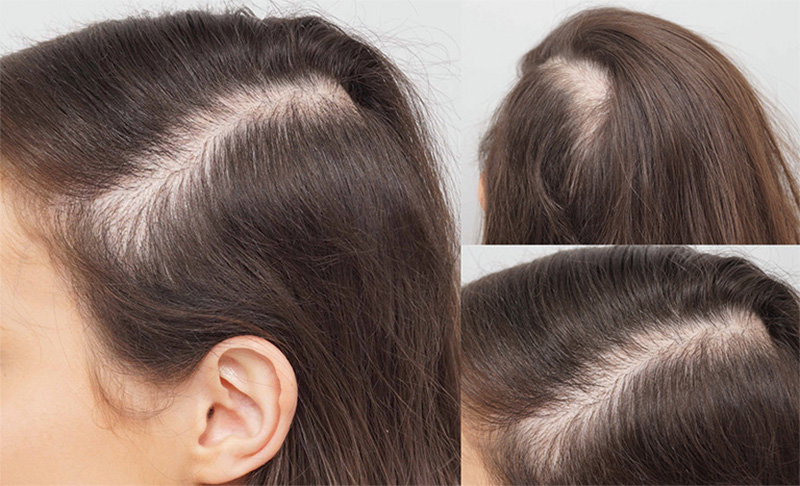
Abstract
Linear morphea en coup de sabre is a rare condition that presents with a linear band of alopecia and is suitable for surgical hair restoration. Hair transplant surgeons should be aware of the possibility of calvarial abnormalities when considering hair transplant procedures.
Key words: linear morphea en coup de sabre (LM ECDS), scleroderma, Parry-Romberg syndrome (PRS)

Introduction
Morphea, also known as localized scleroderma, is a rare disease seen in both adults and children. Most pediatric patients have the linear subtype, which can extend deeply into the subcutaneous tissue, muscle, and bone. Linear morphea on the head and neck, called en coup de sabre (ECDS), and Parry-Romberg syndrome (PRS), also called progressive hemifacial atrophy, are felt to be related variants within the morphea spectrum of disease.
Case Presentation
An 18-year-old female presented to the Farjo Hair Institute with a linear morphea en coup de sabre (ECDS) lesion left parieto-occipital scalp (Figure 1). The condition had presented in childhood and had been stable for many years. There were no extracutaneous stigmata, and although there was some fat atrophy, there was no overt bony abnormality.
Procedure: The patient opted for the linear strip excision method of donor hair harvesting and had 1,903 follicular unit grafts implanted using forceps (Figure 2). Implantation density was conservative given the scarring nature of linear morphea.
Post-operative healing was uneventful. The patient was reviewed at 10 months and was pleased with the results achieved (Figure 3) but wanted to increase density by repeating the procedure.
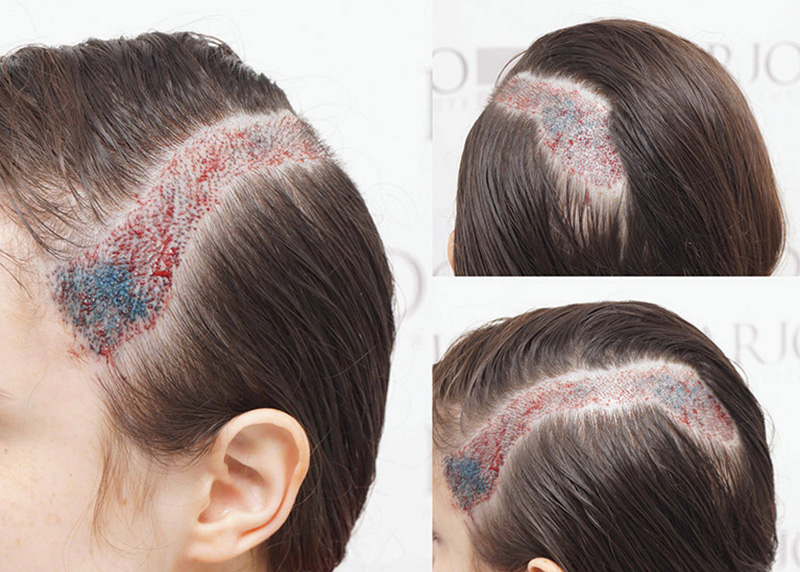
Discussion: Surgical excision was offered as an option to the patient but would still have left a non-bearing surgical scar and was declined by the patient. Successful hair transplant in LM ECDS has been published in the medical literature.¹,² A variety of neurologic symptoms have been reported, most commonly seizures and headaches.3 In addition, computed tomography (CT) and magnetic resonance imaging (MRI) can reveal calvarial and intracranial abnormalities even in asymptomatic patients, so hair transplant surgeons should be aware of this when planning hair transplant procedures.

In this case, funding was sought from the National Health Service and granted, so there were no surgical costs to the patient.
References
1. Dai, Y., A.E. Xu, and J. He. A case report of coup de sabre patient with hair transplantation. J Dermatol Treat. 2017; 28:546-548. https://www.ncbi.nlm.nih.gov/pubmed/28142293
2. Park, S.W., and H.Y. Wang. Survival of grafts in coup de sabre. Dermatol Surg. 2002; 28:763-766. https://www.ncbi.nlm.nih.gov/pubmed/12174076
3. Appenzeller, S., et al. Neuroimaging findings in scleroderma encoup de sabre. Neurology. 2004; 62:1585-1589. https://www.ncbi.nlm.nih.gov/pubmed/15136686 n
Download this case study »
Return to OverviewRelated Cases
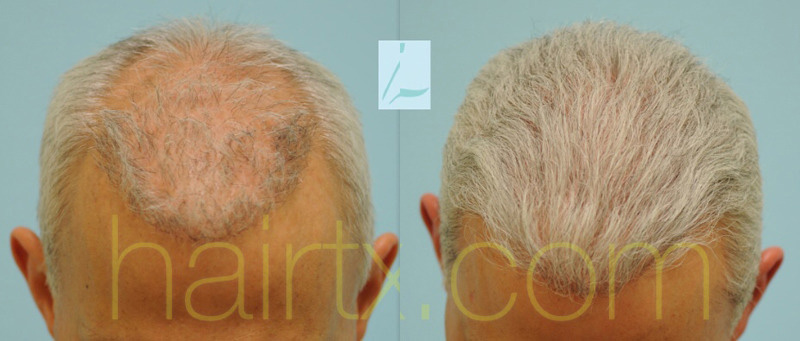
Plug & Slot Deformity Correction with Strip Harvest & Beard FUE Hair Transplant
August 24, 2022 Certified Case
Case Description History: This 54-year-old otherwise healthy Caucasian male had 5 prior hair transplants to his scalp as well as 3 scalp reductions in his…
View Case Study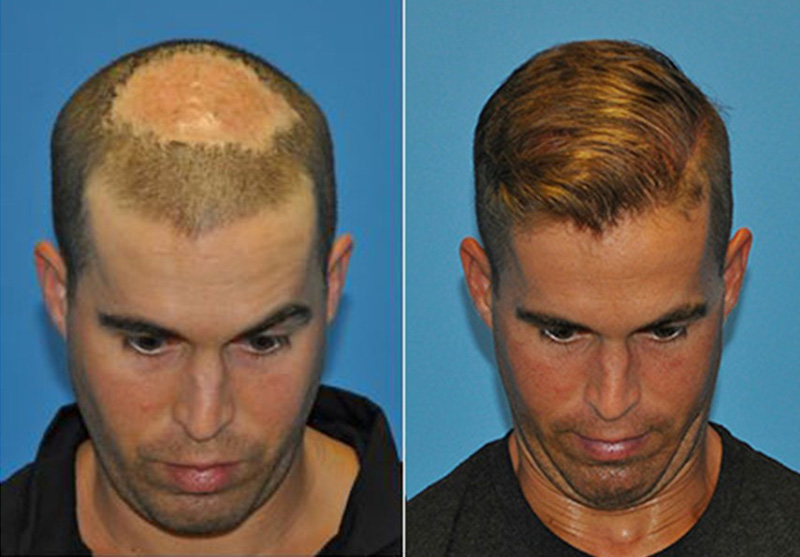
FUE Hair Transplantation- Scar Tissue Following MRSA Infection
August 24, 2022 Certified Case
Case Description History: This is a 31 year old male with a history of hospital acquired MRSA infection to his scalp following colorectal surgery in…
View Case Study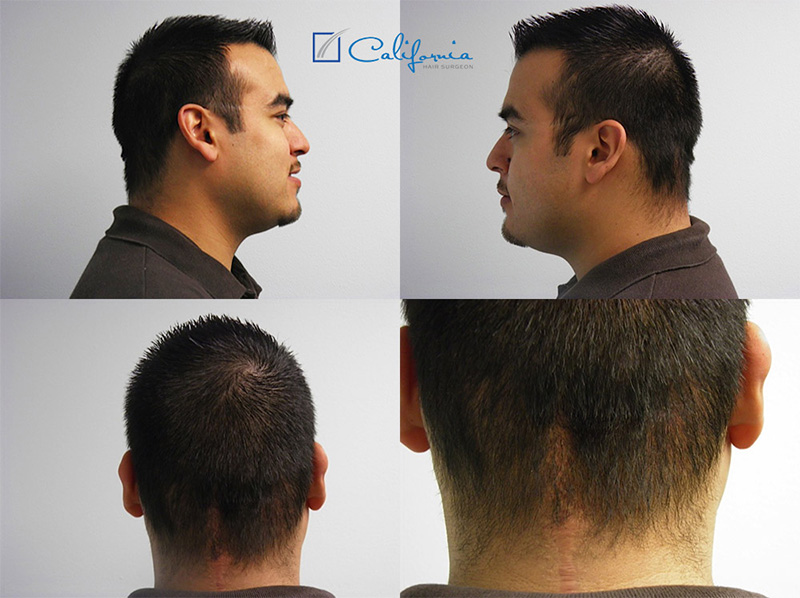
Hair Transplant Repair Of Scarring From Cancer Treatments
August 24, 2022 Certified Case
Case Description History: This 26-year-old male had a rare brain tumor known as a ganglioglioma at the age of 18. When other men his age were worried…
View Case Study
Hair restoration in a female patient post craniotomy and radiation treatment for Astrocytoma. (malignant brain tumor)
August 24, 2022 Certified Case
Case Description Patient History: This 40-year-old white female underwent a surgical procedure for the removal of a malignant brain tumor from the right frontal…
View Case Study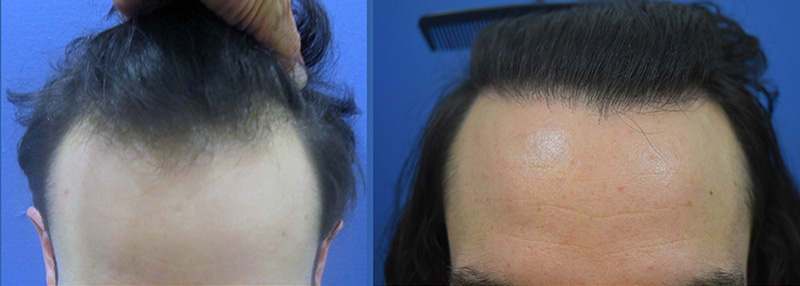
Conservative Hairline Recreation in a Young Adult Male
August 24, 2022 Certified Case
Case Description History: This 23-year-old male presents with complaints of hair loss involving the frontal hairline. He has become particularly concerned about the recession that…
View Case Study